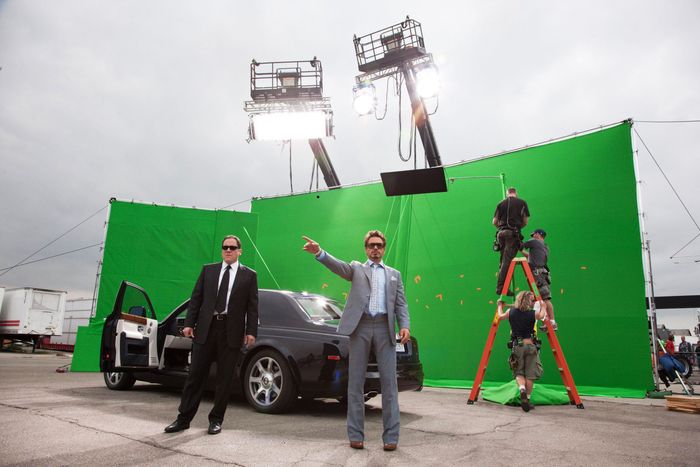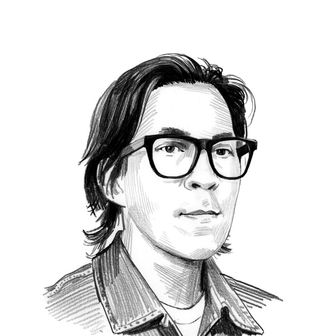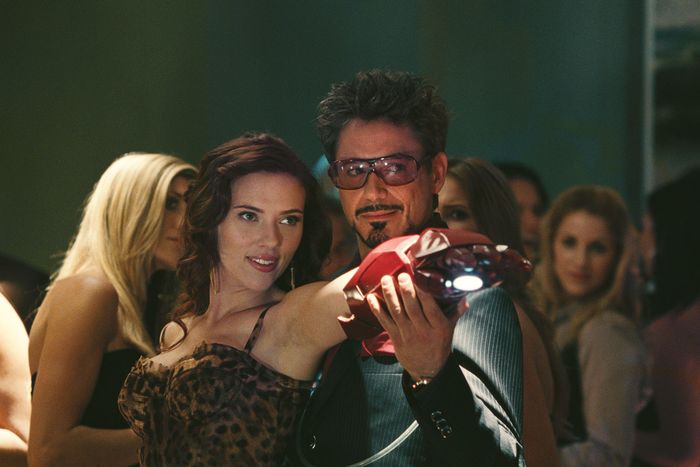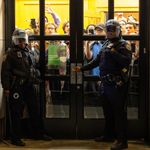
Iron Man 2 rocketed into theaters 12 years ago with the concussive impact of a repulsor blast. Over its opening weekend, the Marvel sequel grossed a hefty $133.6 million in North America, eventually earning $623.9 million worldwide and financially eclipsing era-defining blockbusters The Twilight Saga: Eclipse, Inception, and Harry Potter and the Deathly Hallows: Part 1. Critically, the $200 million follow-up to the Marvel Cinematic Universe’s foundational film Iron Man did okay but not great. New York’s David Edelstein articulated a common refrain, opining: “It would be easy to write something along the lines of ‘Alas, those millions couldn’t buy a decent movie,’ but I think they can — and have.”
Easy enough to overlook, then, that the studio’s then-chairman David Maisel green-lit Iron Man 2 just three days after the original Iron Man’s debut and that it hit wide release a mere 23 months after that. It hustled into production without a script: the rough cinematic equivalent of breaking ground for a skyscraper without a blueprint. Even as cameras rolled, studio heads and filmmakers hadn’t yet agreed on what the movie was tonally supposed to be. That indecision led to a taxing process of on-set script doctoring and daily rewriting to accommodate star Robert Downey Jr.’s quicksilver ad-libbed acting style — a constant pivoting that caused the film’s sole credited screenwriter, Justin Theroux, so much stress that his back gave out, causing him to require bed rest.
“There was the sense he was overwhelmed with trying to keep this point in the center between what Marvel wanted to do, what they could do, what they had already done, and what everyone would allow,” says one Marvel insider, a repeat visitor to the Iron Man 2 set, who, like others quoted in this story, requested anonymity. “That target is pretty small. It changes by the hour. They’re making wholesale changes to the story when the cameras are rolling. At night, [Theroux] is doing writing gyrations trying to make it all make sense.”
Iron Man 2 stands as arguably the most unmoored and overall chaotic production in Marvel Studios’ reliably rainmaking 28-film history. “I feel like I’m finishing this one the way El Cid finished the war,” director Jon Favreau said on the last day of IM2’s post-production: “strapped onto his horse dead and sent into battle.” But the studio’s “growing pains” movie, as one of our inside sources describes it, would go on to establish many of the parameters of Hollywood’s first cinematic universe. Thirty-five-year-old Marvel production president Kevin Feige and Favreau — at the time of Elf fame — effectively staked the fate of the MCU on Downey, a talented but mercurial star with a penchant for self-destruction who’d only just returned to the A-list ranks.
Bungling the sequel would not only be bad for everyone’s bottom lines and rising reputations, it would extinguish excitement surrounding the MCU. Fast-tracking Iron Man 2 meant bumping planned Thor and Captain America movies down the release corridor and forgoing any theatrical output in 2009 altogether. Nonetheless, IM2 took risks. In the most outward indication of his burgeoning clout, Downey insisted on hiring the cool-guy screenwriter behind Tropic Thunder — the movie that earned Downey an Oscar nomination in 2009 — and brought in his wife, Susan Downey, as executive producer. Theroux was tasked with adapting the “Demon in a Bottle” story arc (from Marvel Comics’ 1979 Invincible Iron Man series) in which Tony Stark is battling alcoholism when he’s not battling supervillains — an oblique homage to Downey’s own substance-use issues. That storyline remained intact long enough for production designer Michael Riva to design a toilet for Iron Man to puke in, but it was ultimately scuttled before principal photography by studio suits concerned an alcoholic Iron Man would derail overseas marketing and depress sales of toys and merch. Susan Downey pushed back against the plot line too out of concern for her husband’s health. Theroux addressed the about-face in a later interview, explaining: “We didn’t want to be the Leaving Las Vegas version of Iron Man 2.”
Casting the movie presented an additional set of complexities. Although Downey is Iron Man’s literal poster boy and its cast is rounded out with Oscar-anointed performers like Gwyneth Paltrow and Jeff Bridges, the film’s first hire, as well as its highest-paid actor, was Academy Award nominee Terrence Howard in the supporting role of Stark sidekick Col. James “Rhodey” Rhodes. Then, as now, Howard had a reputation for irascibility. His “difficult behavior” on the original Iron Man set is said to have done little to endear him to Favreau, who maneuvered to drastically reduce Rhodey’s screen time in the sequel. That, in turn, compelled Marvel — under the leadership of notoriously penny-pinching (and Mar-a-Lago member) CEO Isaac “Ike” Perlmutter — to reportedly attempt to reduce Howard’s contractually obligated $8 million payday for IM2 by somewhere between 50 and 80 percent. What happened next is not publicly known. Either the actor’s management team pulled him off the film or Howard was fired. (A representative for Howard did not respond to Vulture’s interview requests.) Sources tell Vulture that Marvel executives never cautioned the actor’s reps about his Iron Man conduct and that his departure was simply a result of miscommunication. Howard called his dismissal the “surprise of a lifetime,” later intimating that Downey somehow finagled a raise by getting him fired. Either way, Don Cheadle was brought in as Howard’s replacement and has gone on to embody the Rhodey character (and his iron-suited alter ego, War Machine) in seven MCU installments to date.
Like Downey before him, Mickey Rourke had battled his way back from career oblivion and in 2009 was riding high after a Golden Globe win and Best Actor Oscar nomination for his turn in the gritty drama The Wrestler when he got the call from Marvel to play Iron Man 2’s villain, Ivan Vanko. According to a source close to the actor, Rourke’s initial reaction was more confusion than elation: “What’s Iron Man 2? What’s Iron Man?!” Still, without having read so much as a page of the script (which was not yet finished) and in spite of his total unfamiliarity with the Marvel Comics foil he would portray, Rourke showed up at a meeting with Feige and Favreau at Beverly Hills’ Four Seasons Hotel to lay out his demands. “I’ll do it,” this source recalls Rourke saying. “But I have to have my hair in a samurai bun. I have to speak in a Russian accent. And I have to have a bird on my shoulder.” (All three demands were met.)
Perlmutter refused to meet Rourke’s salary demands, however, offering the beefy 91/2 Weeks actor a mere $250,000 for the role. But according to our source, Downey kicked in a portion of his $10 million payday to help meet Rourke’s quota. “It was a major sum to get Mickey close, and Mickey took the deal,” the person says. From there, Rourke steeped himself in Russian prison culture, researching mob tattoos and even visiting Moscow’s notorious Butyrka Prison. Nevertheless, he headed into Iron Man 2 “with a lot of ambivalence” and reportedly became frustrated with Favreau (“a director that doesn’t have any balls”) and Marvel Studios (as a maker of “mindless comic-book movies”) for oversimplifying the Vanko character in edits. “I wanted to bring some other layers and colors, not just make this Russian a murderous, revenging bad guy,” Rourke told Crave Online. “Unfortunately, the [people] at Marvel just wanted a one-dimensional bad guy, so most of the performance ended up on the floor.” (Elon Musk’s cameo, however, made it in.)
Over Marvel Studios’ 14-year run as Hollywood’s most reliable blockbuster factory, Feige has come to be regarded in exalted terms: as the “architect” of the MCU, the studio’s tireless quality-control technician, franchise quarterback, chief proselytizer, and brand manager. Way back in the start-up days, though, Feige was hardly indispensable. “When they made the first Iron Man, there was a triangle of power,” says a source close to the production. “Favreau, Feige, and Downey, they were equal partners.” But on IM2, “Feige and Favreau had the success of Iron Man, but they knew Marvel could succeed without either one of them. They could not succeed without Downey. He was the valuable one. It tilted things in his direction.”
“They had lightning in a bottle in Downey — his love of ad-libbing and riffing, finding unexpected gold on the set. But it was very hard to keep him managed in this environment,” says our on-set insider. (Shooting the original Iron Man, Jeff Bridges famously reconciled himself to making a “$200 million student film.”) “Theroux was a fairly untested writer who had to go home every night and rewrite the next day’s pages to fit what Downey had changed the story into.”
Theroux remained on set for most of the shoot, revising enormous swaths of other actors’ dialogue to jibe with Downey’s improvisations. Although star and writer enjoyed a close personal rapport, the constant script doctoring reportedly took a physical toll on Theroux. “The stress manifested with him in his body. Some people get skin conditions. Some get it in their stomach. For him it was his back,” says the person who observed the writer on set. (A spokeswoman for Theroux said he was on location and unavailable for an interview. She also said, “He did not have back pain from production or ‘rushing.’”)
Upon its release, critics seized upon Iron Man 2’s patchwork quality, its hodge-podge of villains and storylines, its aesthetic changeover from the practical stunt work in IM toward a heavier emphasis on CGI. But taking in $623.9 million, the sequel bested its predecessor by nearly $40 million: precisely the kind of return on investment for which Marvel executives had hoped. The movie’s hidden price tag, though, was its impact on the creative team’s interpersonal relationships. “Everybody left that movie feeling uncertain about their relationships with one another,” says the insider. “Downey and Favreau weren’t sure how they were doing with each other.”
Favreau notably did not return to the director’s chair for Iron Man 3 (the only other numerical sequel in the MCU canon). But he returned to the Marvel fold to play Harold “Happy” Hogan, Stark Industries’ head of security as well as Tony’s chauffeur and bodyguard, in six additional cinematic-universe entries. (Favreau also directed Disney’s live-action The Lion King and co-created the Disney+ series The Mandalorian.) Theroux wrote the 2012 movie musical Rock of Ages and executive produced seven episodes of Apple TV+’s dramatic series The Mosquito Coast but has largely kept in front of the camera in the intervening years, notably in HBO’s The Leftovers. Feige remains Hollywood’s most successful studio executive. And Downey, for his part, closed out his contractual obligation to Marvel when Iron Man died a heroic death in Avengers: Endgame, having earned somewhere between $300 million and $400 million for his time in the armored suit.
At a 2019 event where Downey presented Favreau with the Gene Siskel Film Center Renaissance Award, the star admitted he and the filmmaker were “close enough to be like brothers.” “Which also means you get all that other stuff,” Downey said. “You get all that, like, ‘I kind of resent you because you weren’t really hearing me.’ I’m not going to say we have the same shrink, because that’s no one’s business …”
“We’ve sort of grown side-by-side over the last decade,” Favreau said. “It’s been really gratifying.”
More From This Series
- The 102 Best Movie Sequels of All Time
- Who Is the Greatest Character to Come Out of a Sequel?
- Hollywood Can’t Leave Romancing the Stone Alone






